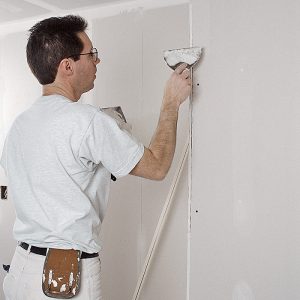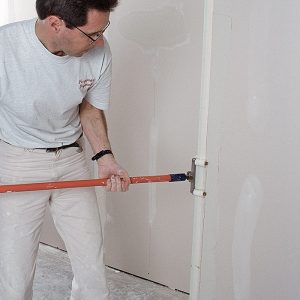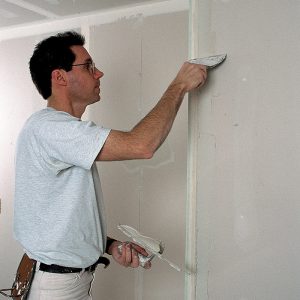Installing Corner Beads
Protect drywall corners with one of the various beads available—in metal, vinyl, or PVC.
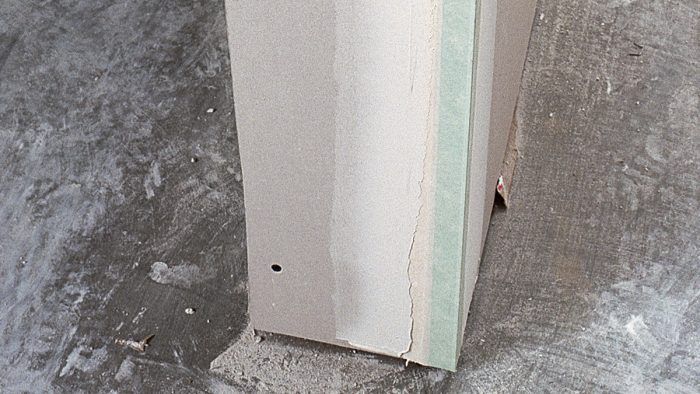
After the drywall has been attached, all outside corners, uncased openings, beams, and soffits should be protected with corner bead. Corner bead resists impact and forms a straight raised edge for taping. Whenever possible, it should be installed in one piece. For standup beads on walls, cut the bead with snips approximately 1/2 in. short of the ceiling height, but push it tight against the ceiling. The baseboard will cover the gap along the floor. The gap at the floor reduces the risk of the bead binding and coming loose or cracking should the wall settle. If more than one piece is required, butt the beads together —don’t overlap them. Make sure that the butted ends are even with each other and that they lie straight.
There are a number of corner and trim beads available. The following is a brief explanation of how they are attached.
Metal beads
When attached to drywall hung over wood framing, galvanized metal bead is usually nailed in place. When attaching it to drywall hung over metal framing, I like to use a corner crimper and 9/16-in. staples that go through the drywall and into the framing. When using screws, nails, or staples, attach the bead every 8 in., placing pairs of fasteners opposite each other on either side of the corner.
There is also a metal bead with barbed edges that hold the bead in place, requiring a minimal number of fasteners. Use hand pressure or a rubber mallet to push the bead into the drywall. A fastener at each end or at the center may be necessary to help align this type of bead.
| WORK SMART: Make sure the edges of corner bead lie flat against the wall (they shouldn’t stick out past the raised bead on the outside corner edge). Use more fasteners if the edges don’t hug the wall tightly. |
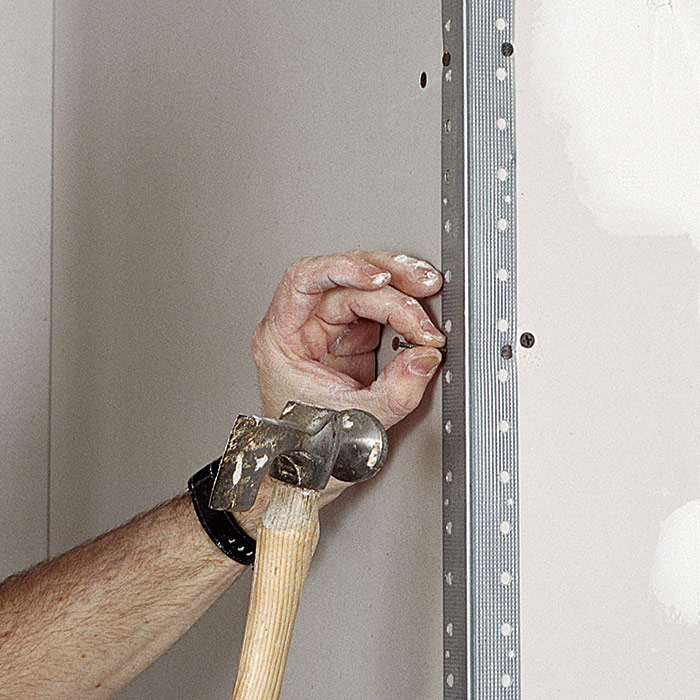
PVC beads
Corner bead made of PVC is both durable and easy to install. Joint compound is used to hold the bead in place. I prefer to use a tool that applies the compound to the back of the bead and then use a roller tool to press the bead into place on the corner. These beads and the ones I explain on the following pages are all easily attached to drywall, whether it has been installed over wood or metal framing. And all of them greatly reduce the cracking at the corners that is common with regular metal bead.
Vinyl beads
There are many different vinyl beads on the market, and all of them can be installed using any one of three methods. First, dry-fit the bead for length and check the fit. From there, you have three options. The first is to attach both legs of the bead every 6 in. to 10 in. with 1/2-in.-long staples. The second is to spray vinyl adhesive on the drywall and then on the bead, and then immediately attach the bead to the corner, pressing the legs into place. You can also use staples in addition to adhesive to create an even stronger corner. The third option is to set the bead in joint compound and then press the bead into place until the compound exudes through the holes. Then press and smooth the legs into place using a taping knife.
Paper-faced beads
Both the paper-faced metal and the paper-faced plastic beads that I have used are installed with joint compound. Because edge seams often intersect corner beads, paper-faced beads are installed after the seams have been taped and coated with the first layer of joint compound. The compound fills the tape between panels and provides a more level surface for the corner bead. You can use either a taping knife or a corner roller to set the bead in the compound. Each brand and type (square or bullnose) has its own specially designed roller tool. Whichever method you use, press the bead into place and embed the paper flanges flat against the wall.
|
|
|
|
|
|
Shaped beads and their accessories
Bullnose corner beads have been around for a while now, but they’ve recently become quite popular. And they do add a refined look to the drywall job. On one of the first jobs I ever used the bullnose style all I had done was attach the bead and I was already getting compliments. They are available in diameter sizes ranging from 3/8 in. to 1-1/2 in. There are many accessories that go along with the styles: to make the transition from bullnose to straight, and for inside or outside corners. There is even a chamfer-style bead that is a good alternative for customers who want to keep straight lines but still like a little flair.
| WORK SMART: If you’re working with the larger bullnose beads, cut the drywall short to accommodate the curve of the bead. |


